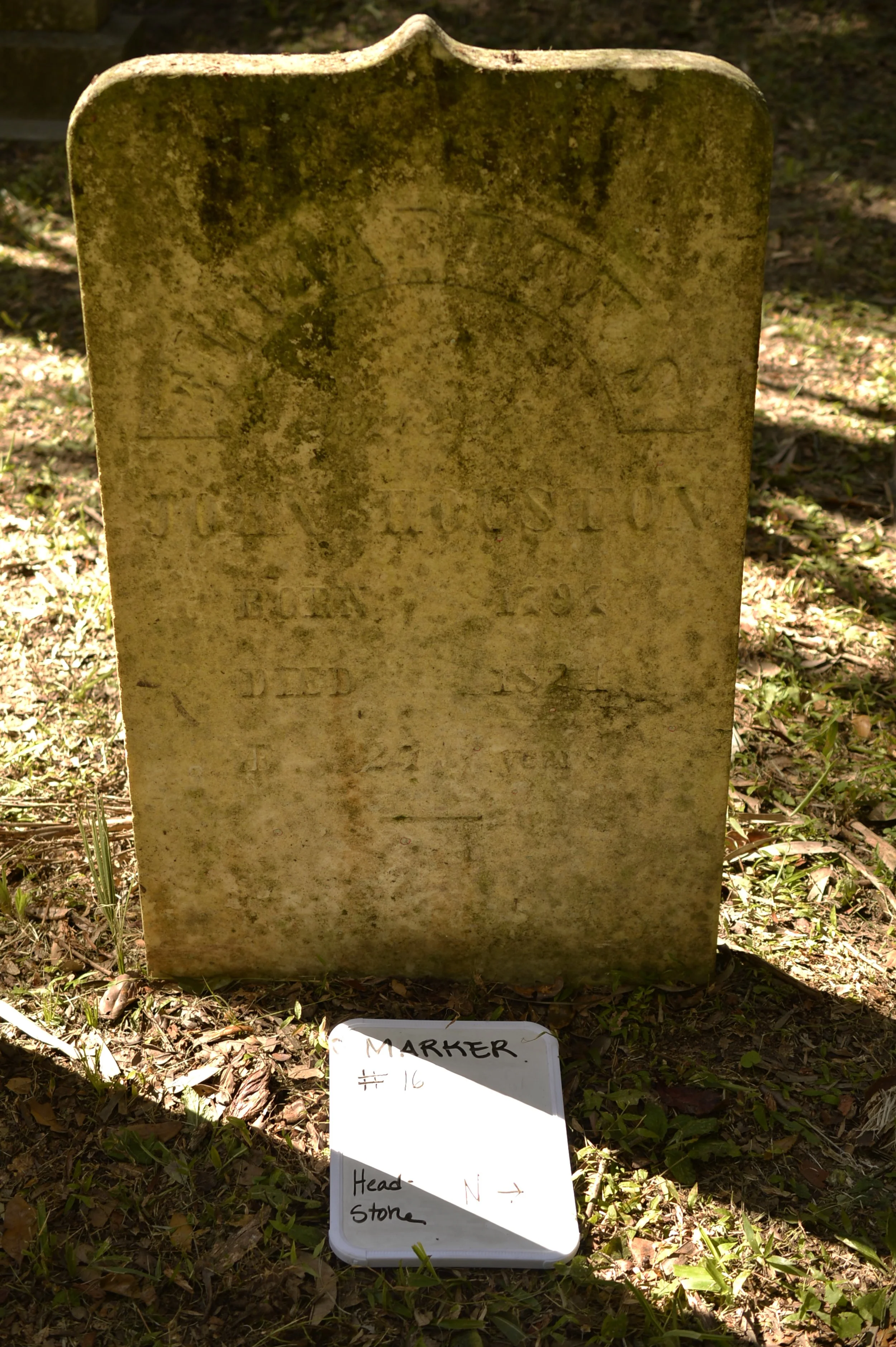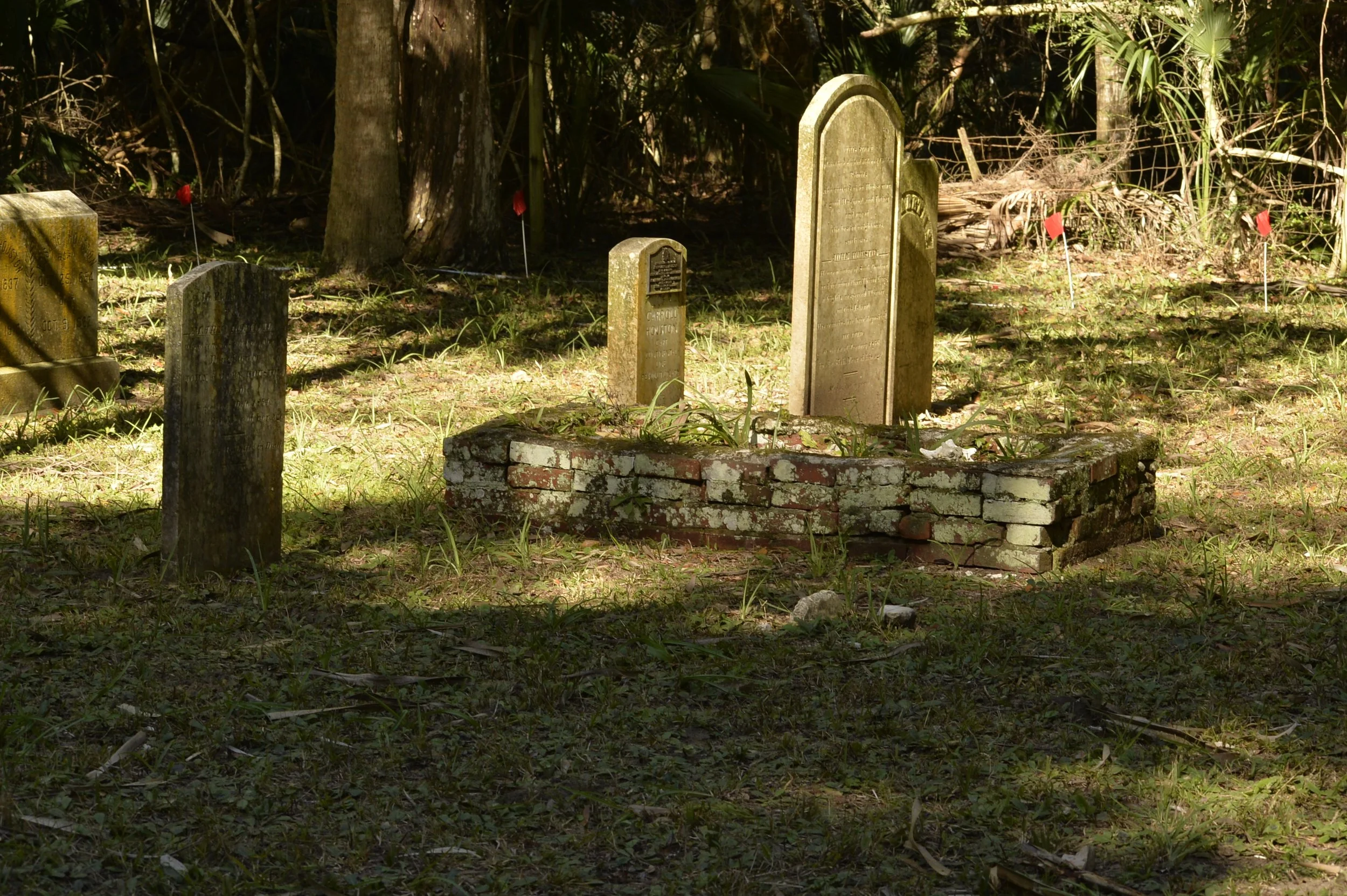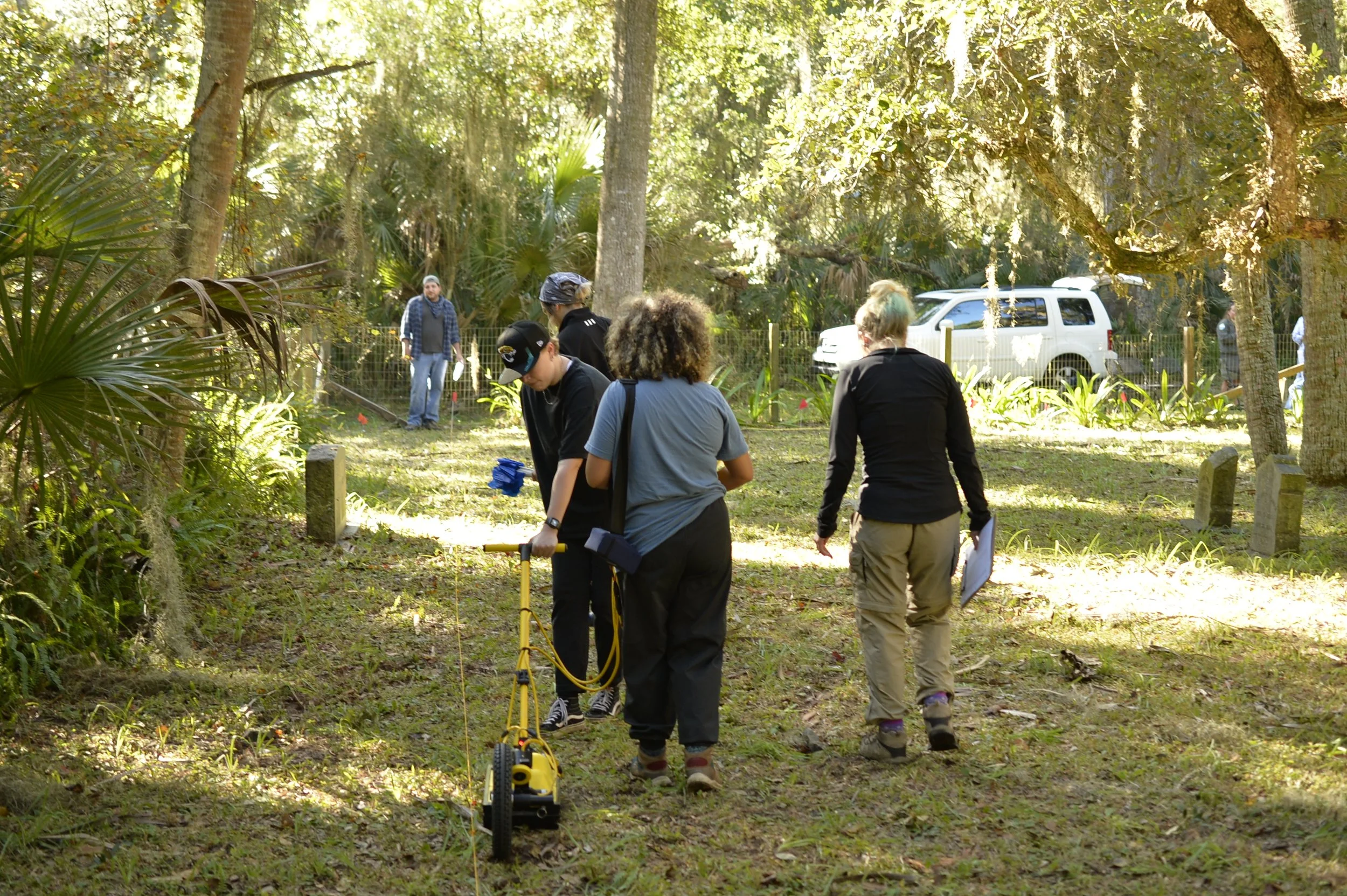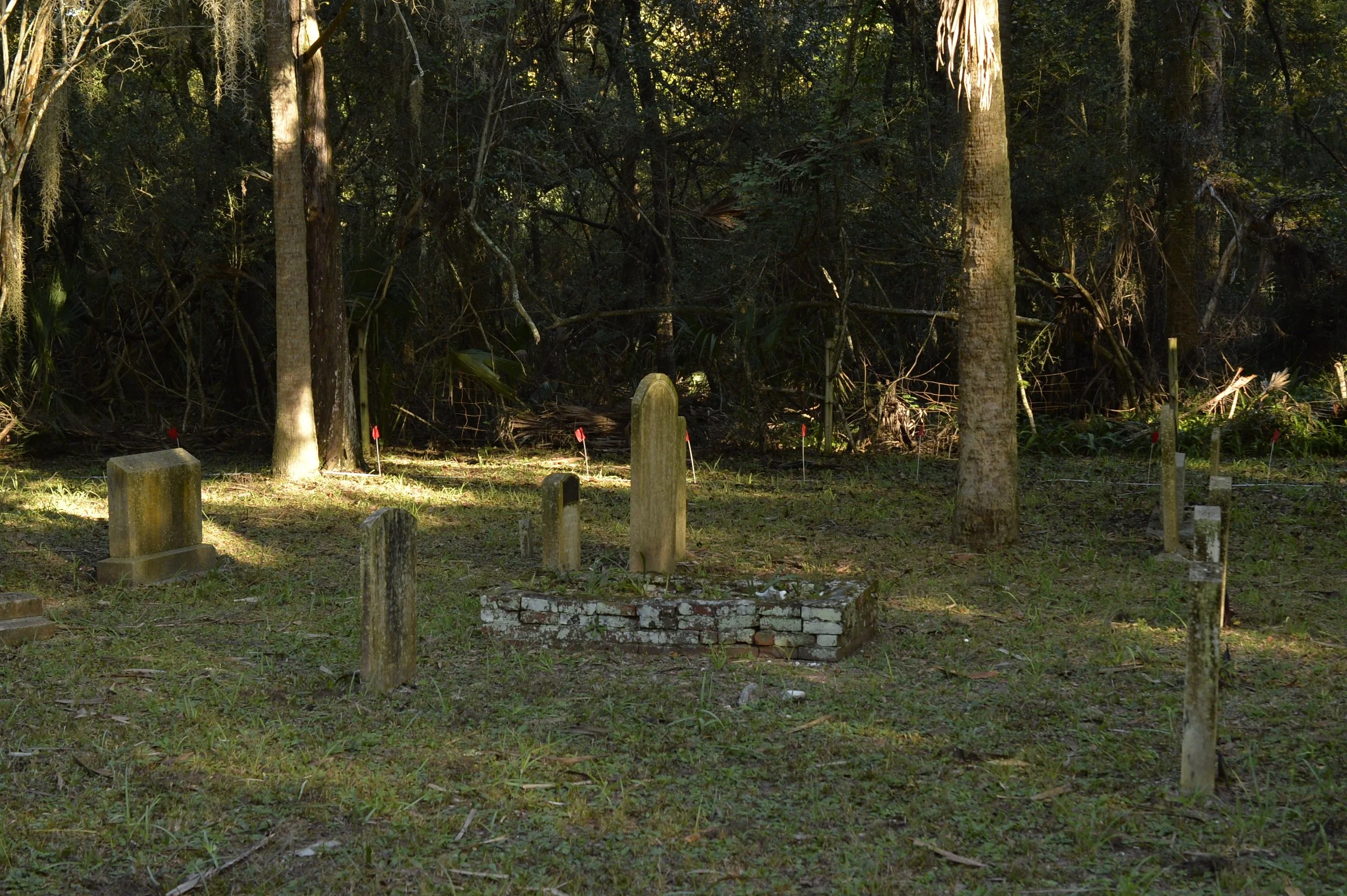Houston Cemetery
Jacksonville, FloridaFall 2021
In the Fall of 2021, I designed a Directed Independent Study (DIS), under the supervision of my mentor Dr. Gordon F.M. Rakita. This DIS focused on the preservation and documentation of one of Florida’s oldest historical cemeteries. In addition to preservation, Ground Penetrating Radar was used to locate possible unmarked graves.
The Talbot Island / Houston family cemetery, located on Big Talbot Island, Florida, was established in 1824 with the burial of Elizabeth Spicer-Houston, the youngest daughter of Spicer Christopher and the wife of John Houston. The Houston cemetery remains an important landmark in the history of northeast Florida. For example, it contains the earliest marked grave of an Anglo settler in Duval County, and it is the final resting place for some of Florida’s earliest pioneers, such as a Revolutionary War Patriot and Historical Bar Pilots. Unfortunately, the passage of time and a period of vandalism have caused the loss of important cultural heritage including the exact location of some graves within the cemetery. This project utilized Ground Penetrating Radar (GPR) to attempt to locate any of the unmarked graves within the Houston cemetery. The purpose of this project was not only to preserve part of Florida’s history by recording its current condition, but to also make note of any anomalies that may occur when using GPR in a 17th century cemetery with the intention of locating unmarked graves.


After the analyzation of all GPR lines that were collected in the field, it was determined that there was the possibility of at least twenty six unmarked graves, in addition to the forty four that are currently in place.
Updated Historical Cemetery Forms were sent to the Florida Master Site Files and to the Florida Public Archaeology Network. All findings and forms were presented and given to the descendent family members, who are the current owners of the cemetery.












